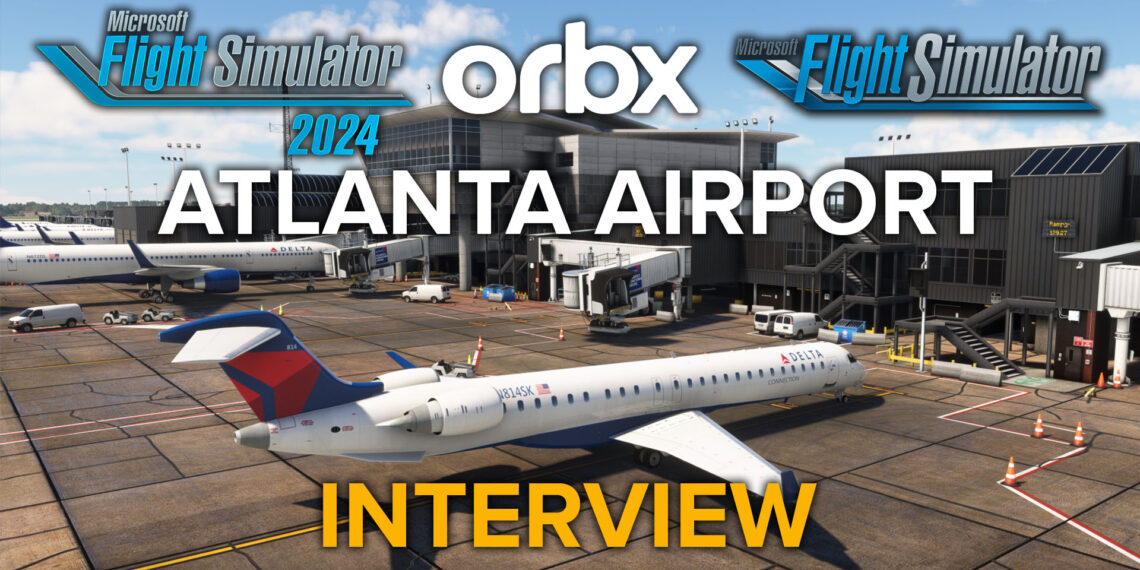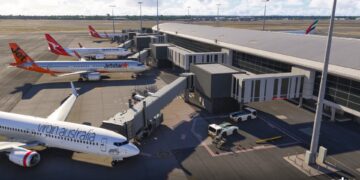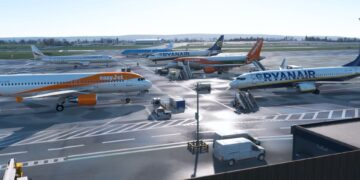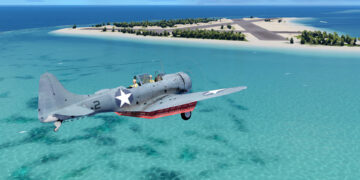Hartsfield–Jackson Atlanta International Airport has always been a rather problematic area of Microsoft Flight Simulator and then of Microsoft Flight Simulator 2024.
An excellent rendition simply doesn’t exist and for such an important hub and the busiest airport in the world, the fact that we have to deal with mediocre and out-of-date renditions certainly is a relevant issue.
Enter Matteo Veneziani, an Italian developer operating under Orbx’s brand who has created great airports like Olbia Costa Smeralda, Skiathos, Hollywood Burbank, and Gold Coast. After cutting his teeth on many medium airports for several platforms, he decided to plug the massive KATL-sized gap in the simulators’ lineup and to do so all on his own.
This is no small challenge, considering that Atlanta Airport is not only the busiest in the world, but also one of the biggest, featuring a whopping 5 (five!) runways, more terminals and concourses than I can easily keep track of, and a metric ton of satellite buildings including Delta’s headquarters, a museum of flight, cargo operations, and much more.
Many development teams with numbers on their side hesitated to face this gargantuan challenge, but today we hear why Veneziani decided to take it on, and how he plans to successfully complete it.
Giuseppe Nelva: Atlanta-Hartsfield-Jackson International Airport is definitely a big project for a solo developer. Some might define it as an impossible challenge. What did determine your choice to work on an airport this large and complex?
Matteo Veneziani: After my latest release of Gold Coast (YBCG) I took a break to think about what I should do. I was tired of living in the medium airport limbo and I felt that I had to change my workflow as it had become inefficient.
On top of that, the market for medium and small airports is getting overcrowded and I did not find any that hadn’t been done and I particularly cared to reproduce.
That’s why I decided to make the jump to large airports. With KATL, I took the chance to introduce development techniques never done before, which I experimented on in the past few months.
I will use the same techniques in my future projects as well, and they will all be large airports. With KATL, I want to start a series of large airports, all made with the same quality standard and with the same innovative techniques.
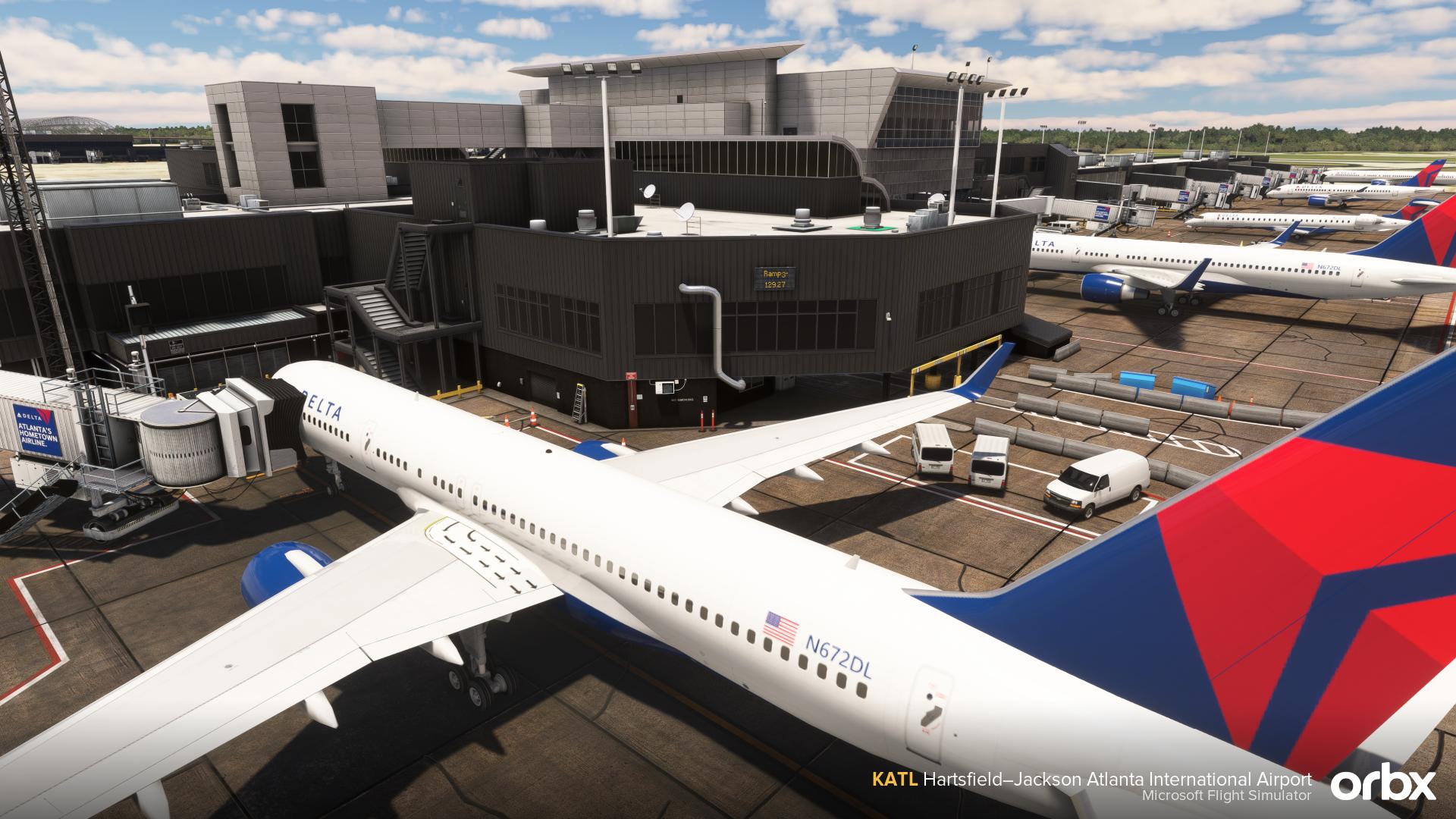
Giuseppe: Approximately, how long have you been working on KATL?
Matteo: I started working on KATL in January 2024. I have been working on it 8 hours a day, 5 days a week. At times I work on Saturdays as well, to achieve good progress. At the moment, it’s about 70% complete and it has been over a year since I started.
Giuseppe: What’s left to do before the airport can be considered complete?
Matteo: At the moment, I’m working on the finishing touches to the terminals. After that, it’ll be the turn of the additional airport buildings and the groundpoly.
There is still a lot of work to do. I don’t want to rush it and risk producing satellite buildings lacking detail. Everything will share the same attention to detail.
Giuseppe: Are you going to release it for Microsoft Flight Simulator 2024 as well? Have you already started working on the new sim?
Matteo: Certainly. It’ll be for both MSFS 2020 and MSFS 2024. I’ve already started testing on MSFS 2024 and it works well.
Giuseppe: Is there any chance for a future X-Plane conversion?
Matteo: Unfortunately, I’m not planning to convert it for X-Plane. A more than decent version for X-Plane already exists, in my opinion.
Giuseppe: Is there any part of the airport that you found particularly challenging or problematic to reproduce?
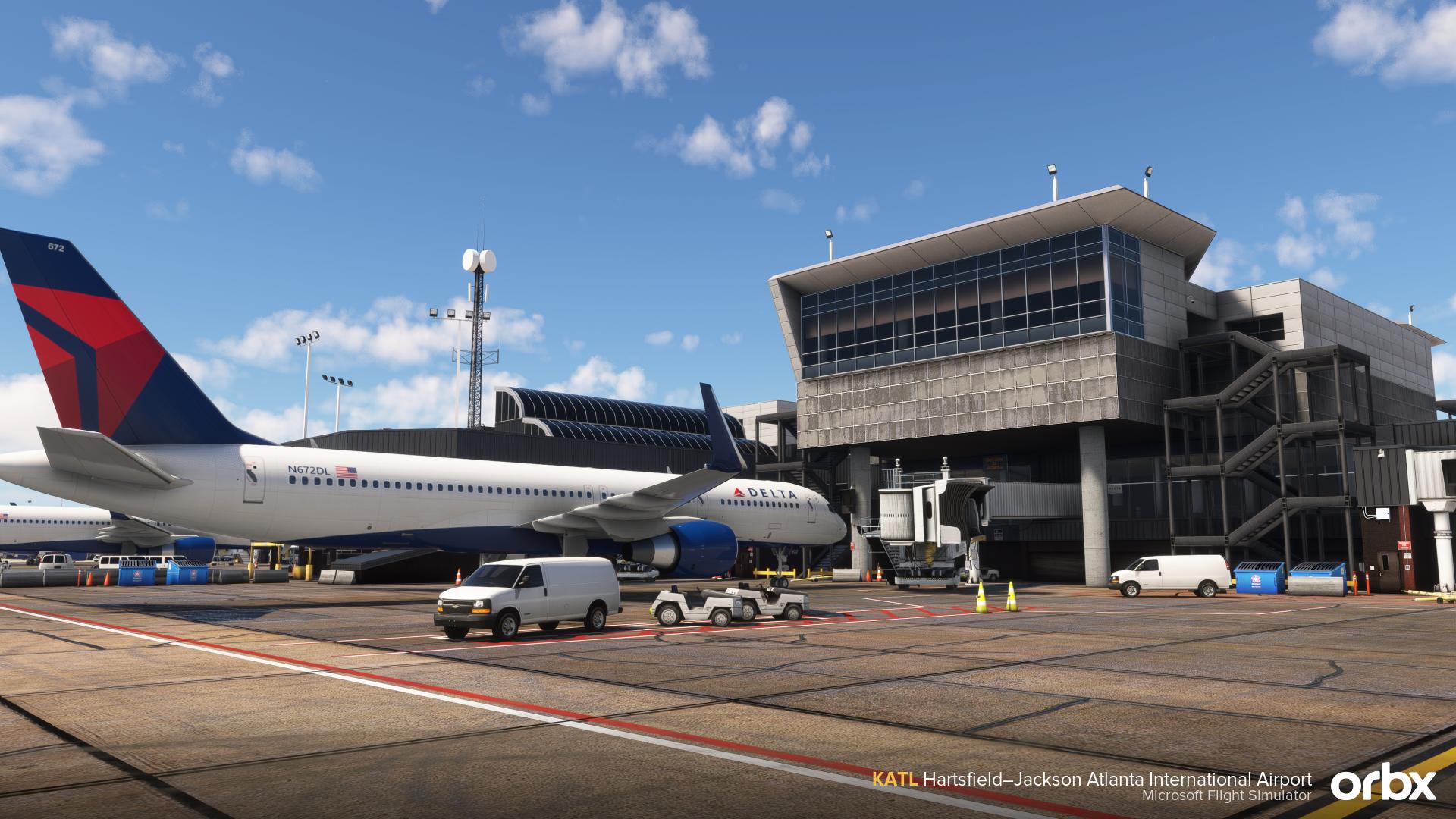
Matteo: There are two areas that are particularly complex and proved challenging. The first is the structure of Concourse F, which is the latest built in the real airport. The second is the structural support of the see-through roof of Terminal T.
In general, finding references to faithfully reproduce every area of the airport has been challenging, as there are areas that are more hidden than others. I’ve had to check out thousands of pictures and videos to reproduce them in detail.
Giuseppe: Which aspect of this airport would you define as your favorite?
Matteo: My favorite aspect is definitely the incredible slope affecting the runways. Specifically, runway 26L/8R feels almost like an aircraft carrier’s launch deck.
On top of that, I love old airports with plenty of history, where you can see the passing of years marked by weathering and wear and tear.
Giuseppe: The announcement mentions an “innovative ambient occlusion technique.” Could you elaborate on what it is about?
Matteo: Ambient occlusion has always been a big challenge for developers. The perceived realism of a model depends on it as much as on good textures.
There are different ways to implement it in flight simulation scenery, but all of them have pros and cons. The main con is that good ambient occlusion requires a high number of textures, impacting performance or limiting texture definition.
Nowadays, many developers don’t even use it because the simulator adds it automatically when a model is loaded.
The problem with this is that the default ambient occlusion is insufficient and often this results in buildings that look unrealistic. Some even disable it, worsening the realism level even further.
The technique I’ve developed and that will be exclusive to KATL and my future airports bypasses all the cons while preserving all the pros.
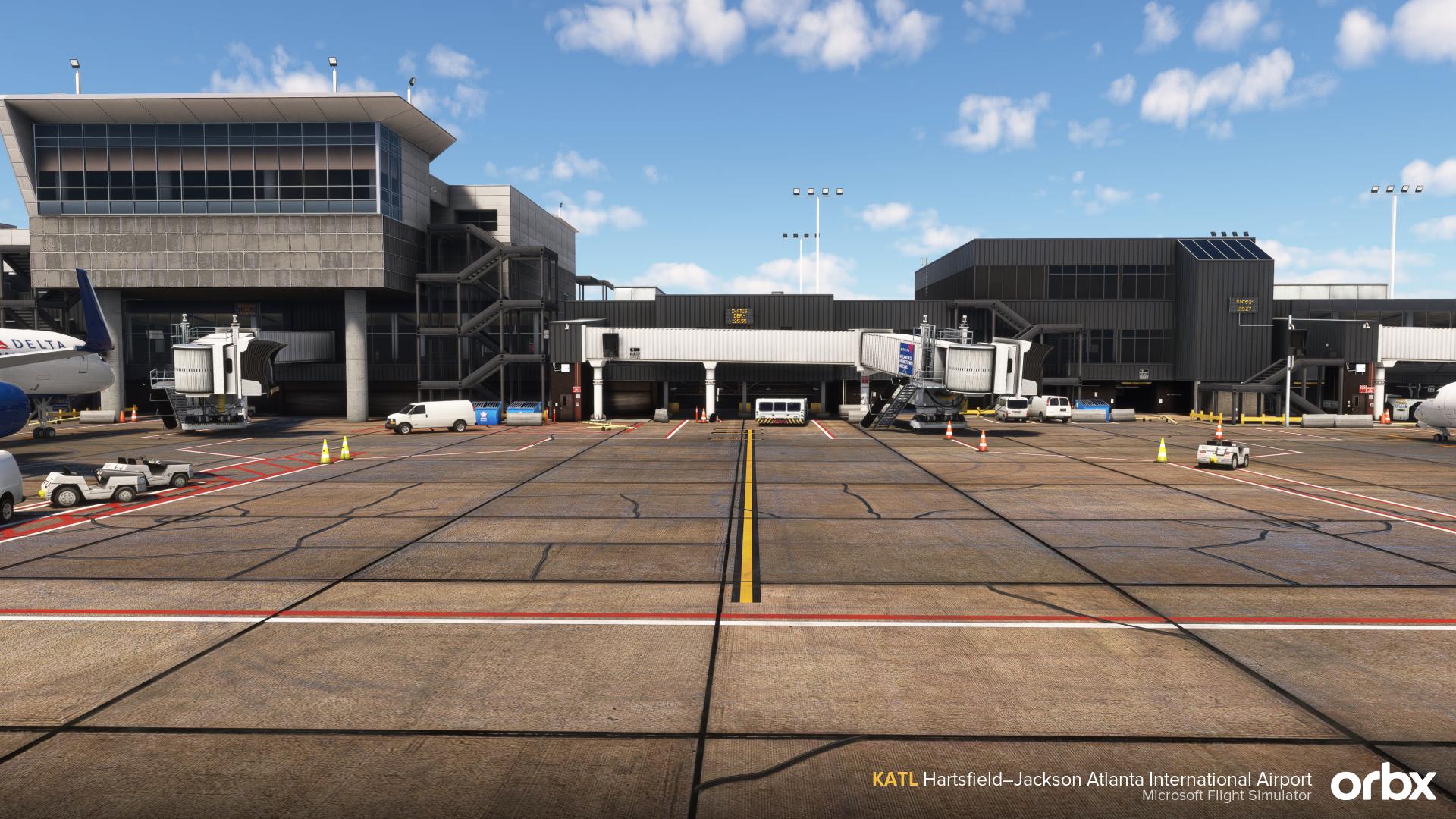
It involves duplicating the structural parts of a building’s mesh and baking it over the ambient occlusion layer, then it gets applied on the building’s main mesh as a decal.
Basically, the buildings will feature a second mesh featuring the ambient occlusion overlaid to the high-definition materials.
The user won’t perceive this overlay and will only see the high-definition building with ambient occlusion.
This enables having high-definition materials featuring the best resolution without creating excess additional materials that would worsen performance, while at the same time preserving the full realism provided by ambient occlusion.
Giuseppe: As a developer, which elements do you think distinguish an exceptional airport from a mediocre one in the modern flight simulation market?
Matteo: Models that precisely reproduce reality, photorealistic textures, good use of ambient occlusion, coherent art style for all the parts of the scenery (buildings, vehicles, ground support equipment, groundpoly, etc.), not using any default models like cars, vehicles, GSE, taxiway signs, and airport clutter, and attention to detail of the airside areas with immersive placement of vehicles and clutter.
Giuseppe: Microsoft Flight Simulator 2024 introduces the option to explore an airport on foot. Do you think this innovation will change how airports are created? Did it influence your work in any way?
Matteo: It’s an interesting feature that enhances immersion for the user. For sure, developers will have to pay more attention to the reproduction of certain areas of an airport, which will in turn make detailed reference materials even more relevant.
In my case, it didn’t particularly affect my workflow, since I’ve always tried to reproduce the aprons faithfully to the best of my abilities. I already aimed to achieve the highest immersion. The only change is that I’ll have to pay more attention to reproducing the interiors even when they aren’t the focus of my work.
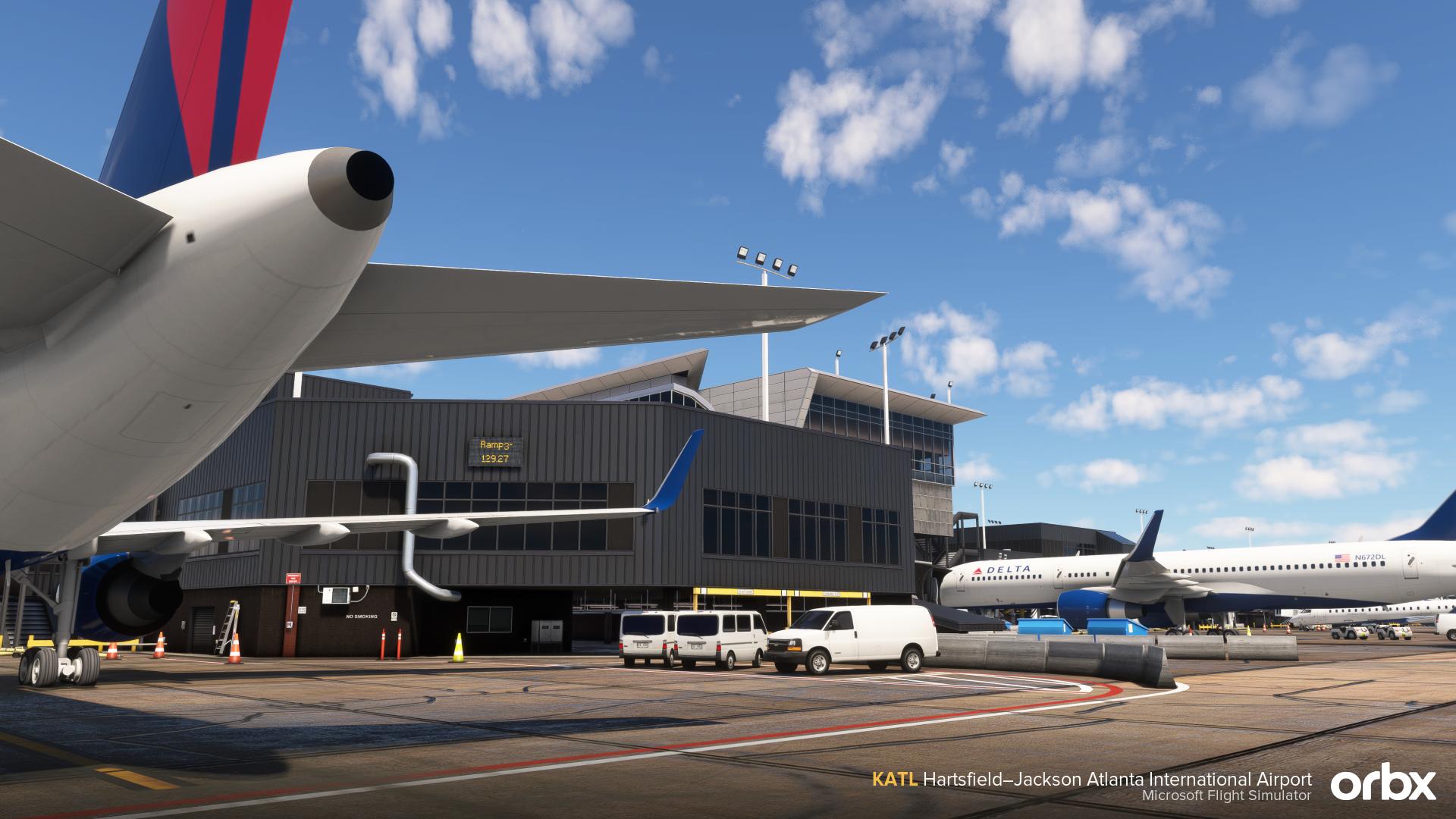
Giuseppe: Is there anything else you’d like to share with our readers?
Matteo: I’m very grateful for the feedback I’ve already received and for the growing hype that I’ve seen. I’m doing my very best for this project.
My mission is to give you all an add-on that will satisfy everyone, with no bugs from day one, and fitting my artistic philosophy.
Atlanta Airport will only be the first of a long series of scenery add-ons that will all follow this new development philosophy. As a flight simulator user, I’m as tired as you all are of seeing scenery that is rushed, bug-ridden, and of mediocre quality released every day.
Microsoft Flight Simulator is currently available for both PC and Xbox Series X|S.
Microsoft Flight Simulator 2024 is currently available for the same platforms following its recent release in November. if you want to see the visual difference against Microsoft Flight Simulator 2020, you can enjoy our video and screenshot comparison.
Incidentally, a few days ago, Microsoft shared an extensive update about its plans for MSFS 2024, so you may want to read it.
You can also check out our in-depth analysis of how much data the simulator downloads from the cloud, clearing the air from some widespread misinformation that made the rounds over the past few weeks.
You can also watch our latest interview with Jorg Neumann, the previous interview with Neumann himself and Sebastian Wloch, another with Asobo CCO David Dedeine, and one featuring Chris Burnett of Working Title and Brandon Yaeger of Got Friends about their work on MSFS 2024.

